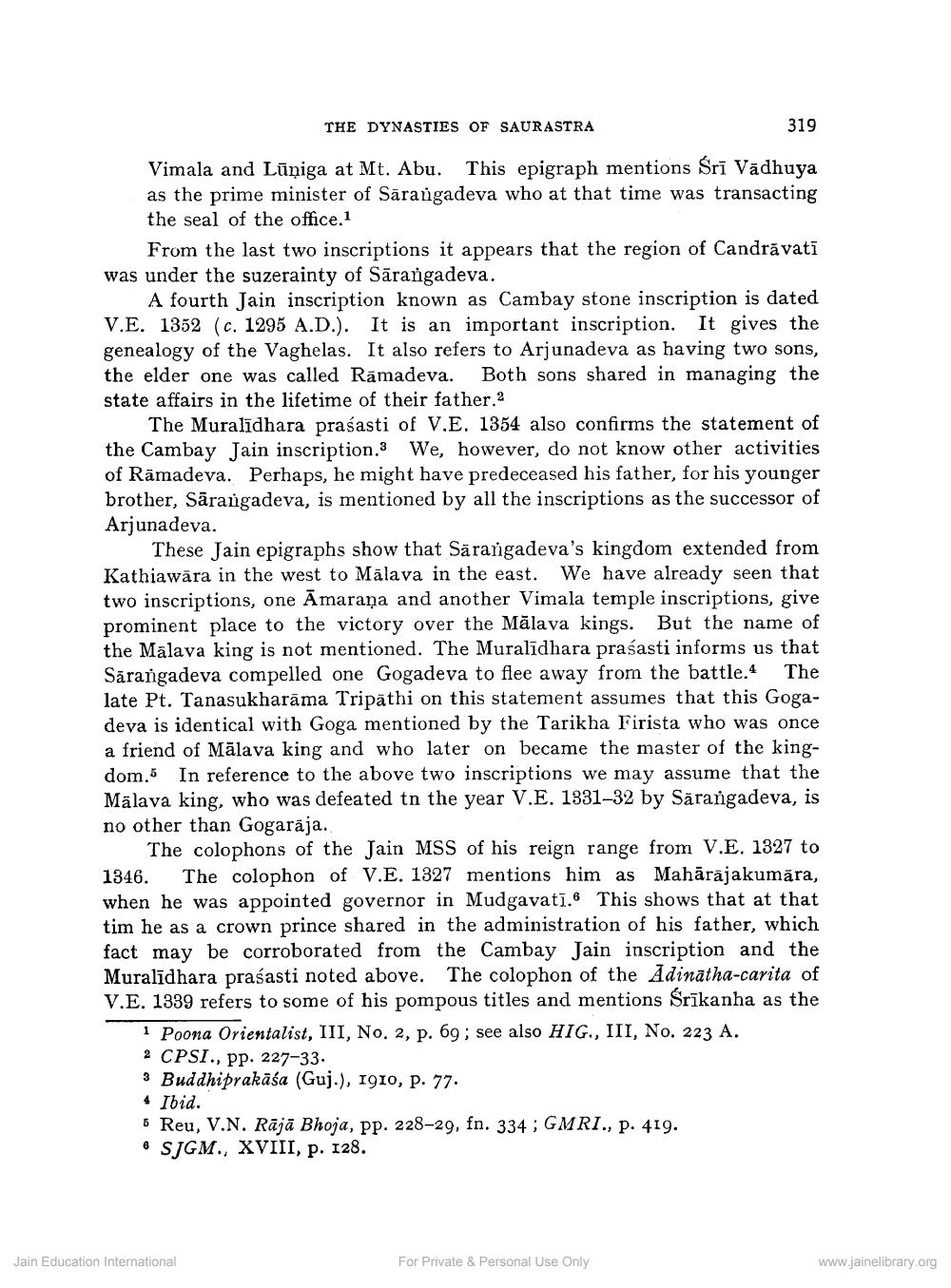________________
THE DYNASTIES OF SAURASTRA
319
Vimala and Lūņiga at Mt. Abu. This epigraph mentions Śrī Vādhuya as the prime minister of Sārangadeva who at that time was transacting the seal of the office.1
From the last two inscriptions it appears that the region of Candravati was under the suzerainty of Sārangadeva.
A fourth Jain inscription known as Cambay stone inscription is dated V.E. 1352 (c. 1295 A.D.). It is an important inscription. It gives the genealogy of the Vaghelas. It also refers to Arjunadeva as having two sons, the elder one was called Rāmadeva. Both sons shared in managing the state affairs in the lifetime of their father.2
The Muralīdhara prasasti of V.E. 1354 also confirms the statement of the Cambay Jain inscription.3 We, however, do not know other activities of Rāmadeva. Perhaps, he might have predeceased his father, for his younger brother, Sārangadeva, is mentioned by all the inscriptions as the successor of Arjunadeva.
These Jain epigraphs show that Särangadeva's kingdom extended from Kathiawāra in the west to Mālava in the east. We have already seen that two inscriptions, one Āmaraņa and another Vimala temple inscriptions, give prominent place to the victory over the Māla va kings. But the name of the Mälava king is not mentioned. The Muralīdhara prasasti informs us that Sarangadeva compelled one Gogadeva to flee away from the battle. The late Pt. Tanasukharama Tripathi on this statement assumes that this Gogadeva is identical with Goga mentioned by the Tarikha Firista who was once a friend of Mālava king and who later on became the master of the kingdom. In reference to the above two inscriptions we may assume that the Mālava king, who was defeated tn the year V.E. 1331-32 by Särangadeva, is no other than Gogarāja.
The colophons of the Jain MSS of his reign range from V.E. 1327 to 1346. The colophon of V.E. 1327 mentions him as Mahārajakumara, when he was appointed governor in Mudgavatī. This shows that at that tim he as a crown prince shared in the administration of his father, which fact may be corroborated from the Cambay Jain inscription and the Muralīdhara prasasti noted above. The colophon of the Adinatha-carita of V.E. 1339 refers to some of his pompous titles and mentions Srīkanha as the
1 Poona Orientalist, III, No. 2, p. 69; see also HIG., III, No. 223 A. 2 CPSI., pp. 227-33. 3 Buddhiprakāśa (Guj.), 1910, p. 77. 4 Ibid. 5 Reu, V.N. Rājā Bhoja, pp. 228–29, fn. 334; GMRI., p. 419. * SJGM., XVIII, p. 128.
Jain Education International
For Private & Personal Use Only
www.jainelibrary.org




